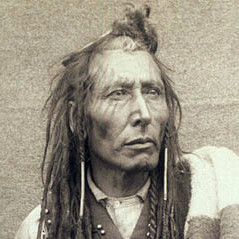Vikings also believed that drinking cod liver oil would make them stronger. Turns out, cod liver oil is high in vitamin D which mitigates seasonal depression which is kinda important in northern latitudes.
Option E: cheese wheel
Brutal lol
I would spam B
“CaN i PiCk AnOtHeR oPtIoN”
Bitch, you came looking for silver and found gold.
She recognized the gold.
She now wants his filthiest pickup line.
Hey baby, the vikings used bones of dead animals in their weapons to make them stronger. Come on over and I’ll bone you like a dead animal and you can see how strong my dick is.
Hey babe, I shat in my bed. Can I sleep in yours? 😉
It better be about dead animal bones and forging too
Hey, you’re hot like a forge. Wanna bone?
(Never said it’ll gonna be good)
are you a raging forge baby? because you’re so hot I want to stick my bone in you.
awkward mode:
you’re so hot baby forge, let me stick my bones in you.
You don’t know if it’s good until you tried it
Baby, I want to burst open your dam … and watch your river flow
- Funky Walker, Dirty Talker
She’s concerned because he also loves talking about Rome and 40k
What is his number. Interested for a friend.
You need to be able to pick the recipe option then. If someone knows recipes from ancient Rome, they might just be a harmless history nerd. If someone knows recipes from WH40K, well, I don’t know what to say.
In terms of 40K recipes, corpse starch is pretty easy. De-bone a (generally human, but others can work in a pinch) corpse, grind up the rest, add salt, and pack it in a can.
Wouldn’t 40k, depending on who and where, be something like, “Open meal package. Place 200g water in package. Close package and shake for 40 seconds. Open package and eat.” Civilian worlds you can just make up whatever, just like the scenario designers do. Want a US-lite world? Got one. Want a world reminiscent of 1800s UK? Got two.
Hot 🔥
Why would anyone need to pick another option? That would seduce the heck out of me
heckin’ seduced
I would agree if not for the flagrant grammatical error. That is a huge turnoff.
“pick a another”
Just means they didn’t copy paste an interesting fact.
I think you can also interpret it that she wanted to hear what she missed.
Well that’s just greedy. But I’ll accept it
That’s when you slap the “one per date” card on the table;)
Smooth
Because this is fake.
I do not know, there could be the option of a very sexy cheesecake recipe.
So, like… a cheesecake recipe?
If I wanted to eat slightly warm or cold cheese, I’d pick better options than cream cheese. You gotta dress up a cheesecake to make it anything but mundane.
She wants the recipe
Jokes on her. The recipe is iron and animal bones to make a sweet axe.
That would be a great follow-up joke.
Now if she chooses the dirty pickup line, you respond with “girl, are you a viking steel crucible? 'Cause I’d put a bone in you.”
And then if she chooses the cheesy pickup line:
Girl, are you made of iron and animal bones? Because you’ve got all the elements to forge a bond stronger than a Viking axe.
LOL
So she wants the D?
I believe the proper response is “No”.
dude forgot Rule 2
pick B a second time
Can I pick a another option
Is this actually true? Because all the YouTube videos I’ve seen of people trying to make iron in primitive ways have the issue of too much carbon in the iron. This causes the iron to be very brittle and hard to work. The trick about making good steel is to get just the right amount of carbon.
You need >700C to decarburise iron you don’t need much for that but coal and a fan, i.e. a bloomery. Pretty much defines the beginning of the iron age. Getting very low-carbon iron is quite easy, you just need enough fuel and air, the trick is then adding the right amount of carbon back. Also, getting rid of impurities, slag inclusions, etc, long story short: Lots of hammering and folding different carbon grades together, though some work can be saved by building very large bloomeries and processing very large batches producing quite slag-free low-carbon iron which then can be case-hardened.
The way out of that is crucible steel, melting your ingredients in an air-tight crucible, but that requires advanced furnace technology that somehow noone came up with before industrialisation, with the exception of India. The banding btw is due to alloy not production method (though you need to follow specific steps to bring out the banding).
You know you are in for a good time when you get to the chapter called “Sexual connotations”.
I’m not an expert on the field, so I’ve read the paper, but am not qualified to draw conclusions from it. But as I read it, the focus is more on the role of ritual and religion in the making of the iron. And the transfer of knowledge through this process and hypothesize the addition of the burning of bone is actually beneficial.
However they do not approach this from a material technology standpoint. So I would love for someone with knowledge on this point to chime in. It’s very interesting if the people back in the day knew how to make low carbon iron and the little bit of carbon they did add came from the burning of the bones. But as I see it the burning of the bones is more a ritual kind of thing and getting all of the carbon out of the iron is the harder thing to do, not putting the carbon in.
Bone char isn’t super high carbon, so it’s possible that either the calcium phosphate or calcium carbonate is playing a roll.
But honestly, you’re probably not getting very much of it mixed in from primitive smelting or forging methods.
Low carbon is actually a good thing to help avoid including too much and making the steel brittle.
I am by no means a material scientist or biologist, but I have studied a lot of them and have some curiosities.
It would be interesting to see how calcium doping modified the properties of the alloy. AFAIK the temperatures that iron smelts at is to high for the carbonate or phosphate bonds to remain stable, so most of it should have ended up as free calcium or phosphorus.
I also imagine that the type of bones have a lot to do with it, since avian bones have a different composition and density than say, a moose bone. Different kinds of animals also have evolved different metal doping concentrations.
You’ve studied a lot of material scientists and biologists? What we talking here? Questionnaires or binoculars in the bushes?
Do you not have a collection of scientists pinned to your wall for display purposes?
Shhhh. You will scare them.
Also remember that carbon is lost as the metal is worked, so the strength can be increased simply by working the metal longer. This is how wrought iron is produced, although wrought iron ends up having a much lower carbon content in the process of removing slag.
* blocked *













